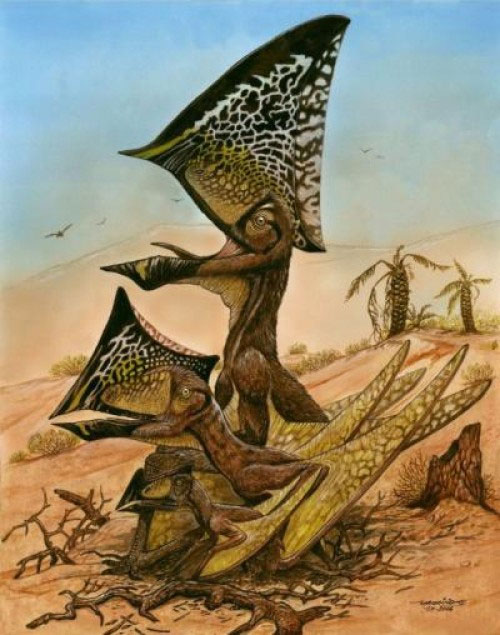Discover more new flying lizards
(Scientists have recently discovered the bones of nearly 50 winged reptiles of a new species, Caiuajara dobruskii, which lived during the Cretaceous period in southern Brazil , according to a research published in the journal Opened by PLOS ONE magazine on August 13, 2014 by Paulo Manzig from Universidade University by Contestado, Brazil and colleagues.

Caiuajara dobruskii flying lizard
The authors discovered clusters of bones in a pit of lizard bones flying in Cretaceous rock. These bones are of individuals including young and mature, wingspan ranging from 0.65 to 2.35m, allowing scientists to analyze their bones in accordance with the animal branch. evolved from a common ancestor, it also saw how these organisms developed as they matured.
After the necessary analysis, the scientists identified these bones as a new species of flying lizard, Caiuajara dobruskii , the southernmost known of this particular flying lizard branch.
Some characteristics of Caiuajara dobruskii are different from all other members of this animal branch, including a protruding bone expansion in the skull extension in front of the eyes, and the Round concave on the outer surface of the jaw.
The different young or older reptiles are mainly about the size and angle of the top of the bone on the top of their head. This bone peak appears to change from a young and inclined slope in the young, becoming large and steep in adults.
According to the authors of the study, bone analyzes show that the organism lives in herds and can fly when it is very young.
- Discover a flying animal that dominates the primitive sky
- The world was once dominated by a toothless giant
- Discover new flying lizards in Patagonia
- Discover new lizards in Kon Tum
- Pterosaurs may have feathers
- Detection of prehistoric lizard fossils
- Strange 'dragon' species make use of ribs to fly
- Detecting lizard-legged lizards
- Found fossil flying lizard eggs
- Discover new lizard species in Cao Bang
- Flying lizards use crests to appeal to their partners
- Big monsters with an airplane dominate the ancient sky
 Discovered an ancient centipede fossil 99 million years old
Discovered an ancient centipede fossil 99 million years old Discovered bat-like dinosaurs in China
Discovered bat-like dinosaurs in China Discovered a 200-year-old bronze cannon of the coast
Discovered a 200-year-old bronze cannon of the coast Discover 305 million-year-old spider fossils
Discover 305 million-year-old spider fossils